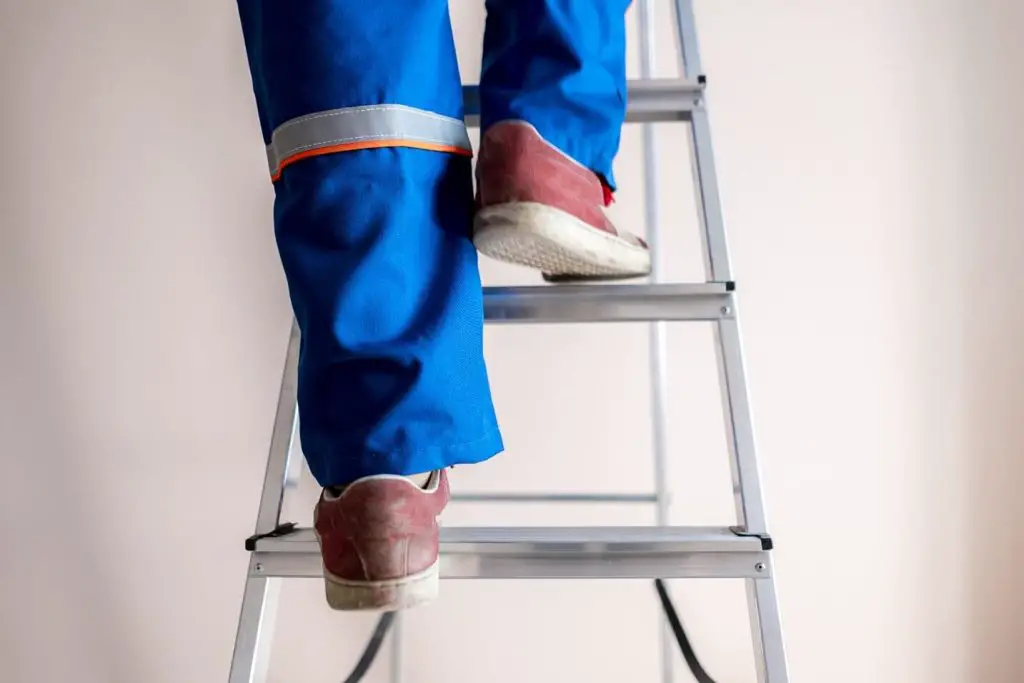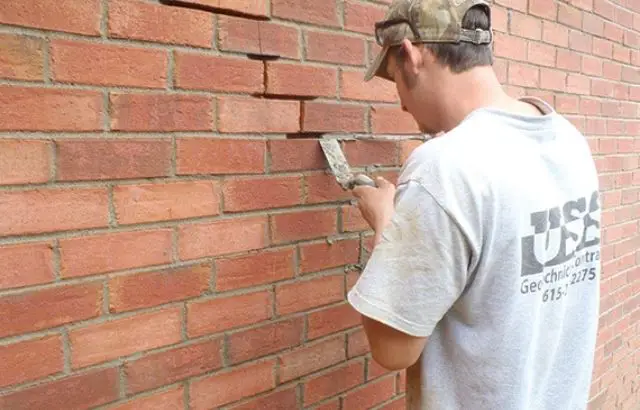Interlocking ceiling tiles are the most used tiles. It is famous for its easy installation and versatility. However, we need to remove them in some situations. If you are worried about removing it and don’t have a guide, then no worries.
In this article, I will guide you through all the basic steps.
How to Remove Interlocking Ceiling Tiles
Gather necessary tools
The first step will be the tools. Every process needs tools to proceed. For the removal of the interlocking ceiling tiles, all we have to grab is:
- Ladder
- Safety glasses
- Gloves
- Pry bar
- Putty knife
- Container
All the above tools are essential to take advantage of them. Collect all the tools and keep them inside.
Set up the ladder securely under the area where you will start.

Hold a ladder and place it on the edge of the room. Make sure to set up the ladder securely on the edge. If the ladder isn’t set properly, you can fall and get hurt, so you must perform this step with full attention.
Put on safety glasses and gloves.

Now, grab your safety glasses and gloves and walk through the ladder. Safety glasses protect your eyes, while gloves protect your gloves. Both these are important, so wear them because safety comes first.
Gently push the edge of one tile upwards to see where it interlocks with its neighboring tiles.

In this step, you have to know and determine the position of the interlock. So, all you have to do is gently push the ceiling tile. Be careful. Could you not push it with great force?
Use the pry bar or putty knife to disengage the interlocking edge gently.

Grab a pry bar or putty knife once the interlock is visible. You can use any of it. Grab it and use it to disengage the interlocking edge. Make sure to perform this step carefully and gently. Otherwise, it can break or get damaged.
Carefully slide the tile out of its position.

Take the slide out and slide it carefully. You have to perform this step gently. If you apply pressure on the slide, then it can get damaged.
Place the removed tile in a safe location or disposal container.

Removing the tiles keeps them in a safe place or disposal container. You can clean an area and store it one upon one. It can get bent and damaged if you don’t keep it secure.
Repeat steps 4-7 for the remaining tiles, working methodically across the ceiling.
After doing all the steps successfully, you have learned to remove the interlock ceiling tiles. To remove all the tiles, move toward the next ceiling tile and repeat the 4 to 7 steps. Keep moving to the next tile and repeat the process until all the tiles are removed.
Check for any nails or staples that may have been used to secure the tiles and carefully remove them.
Now, look at the ceiling surface to see if any nails or staples are holding the ceiling. If there are any nails or staples, then remove them with a hammer. Otherwise, it will pose a hazard. This step is important, so you have to find out the hidden nails may be hidden behind the tiles. So find out and remove it.
Clean the area and dispose of the tiles responsibly.

After all the struggle, the last step is easy. It is a cleaning of the area. Hold a cloth and gently move it in the ceiling area. Ensure to remove all dust and its particles. If any particles are left, it is a mess, so clean it properly.
My Opinion
Changing and removing interlock ceiling tiles is fun and easy. It has a feature to remove and place easily. But many people find it hectic.
It is easy. All you have to do is follow all the steps carefully. Every step plays an important role in the process, so you can’t skip any of it. Make sure to perform all the steps patiently. If you apply more pressure than needed in a step, your ceiling tiles can get broken or damaged.




